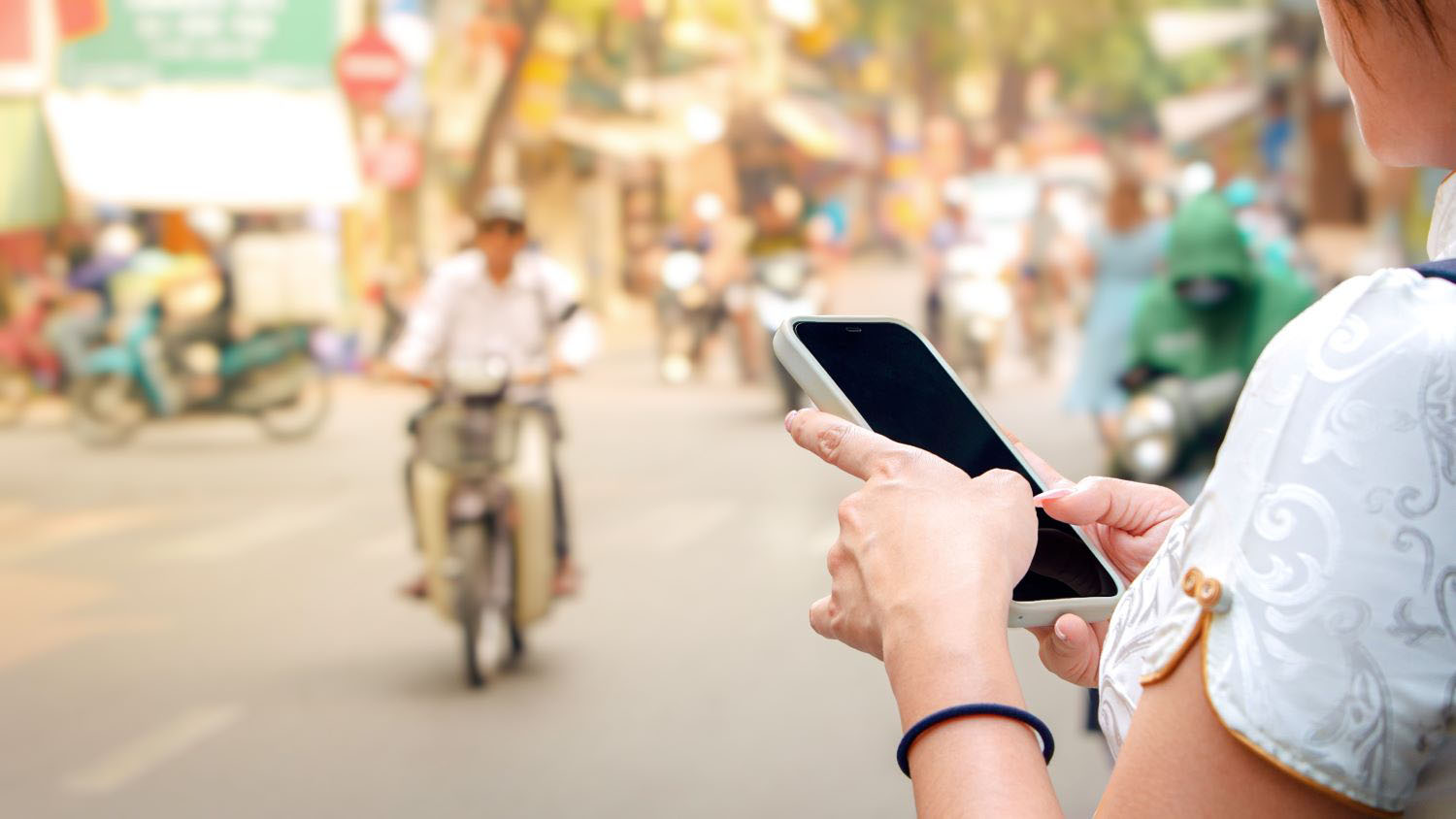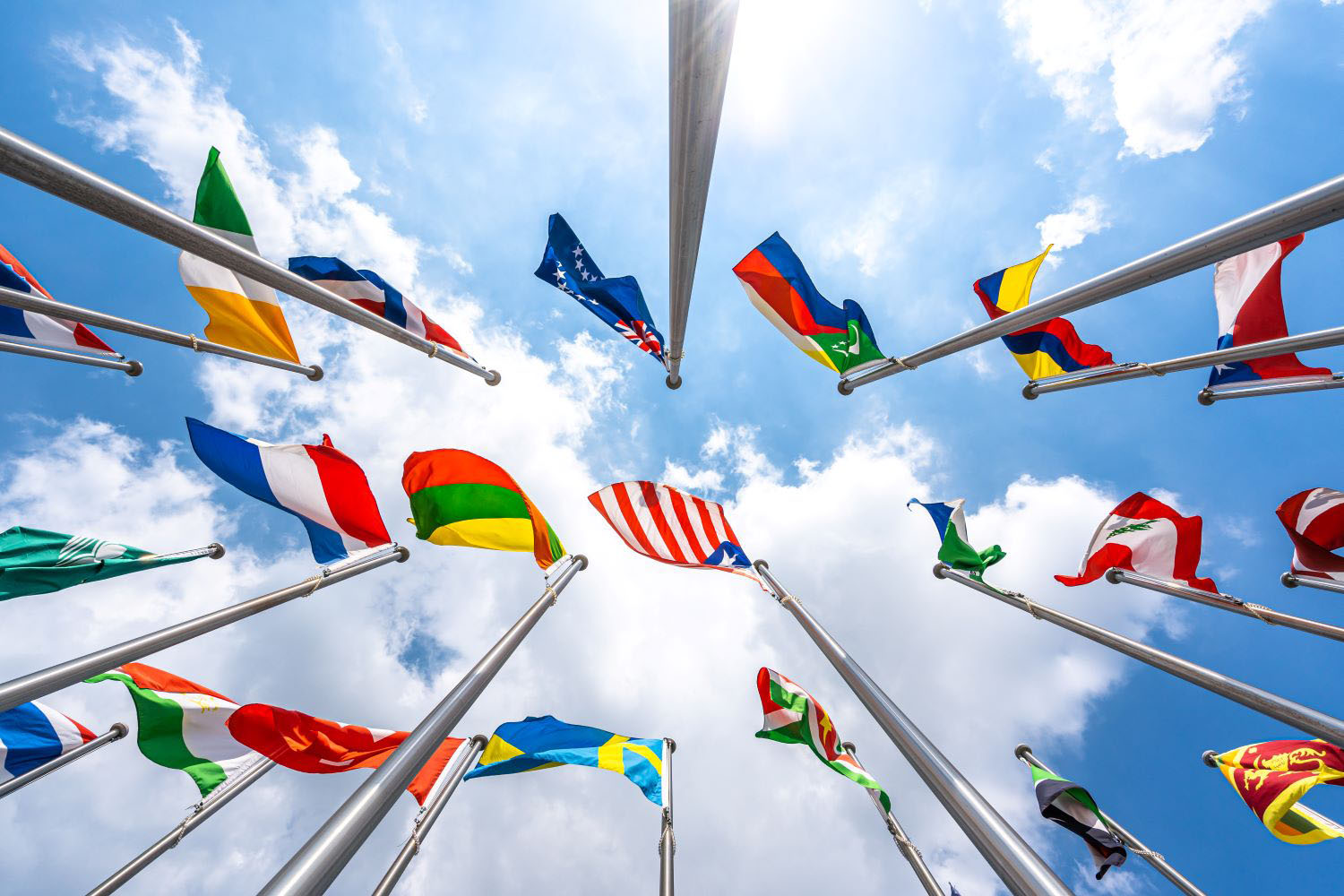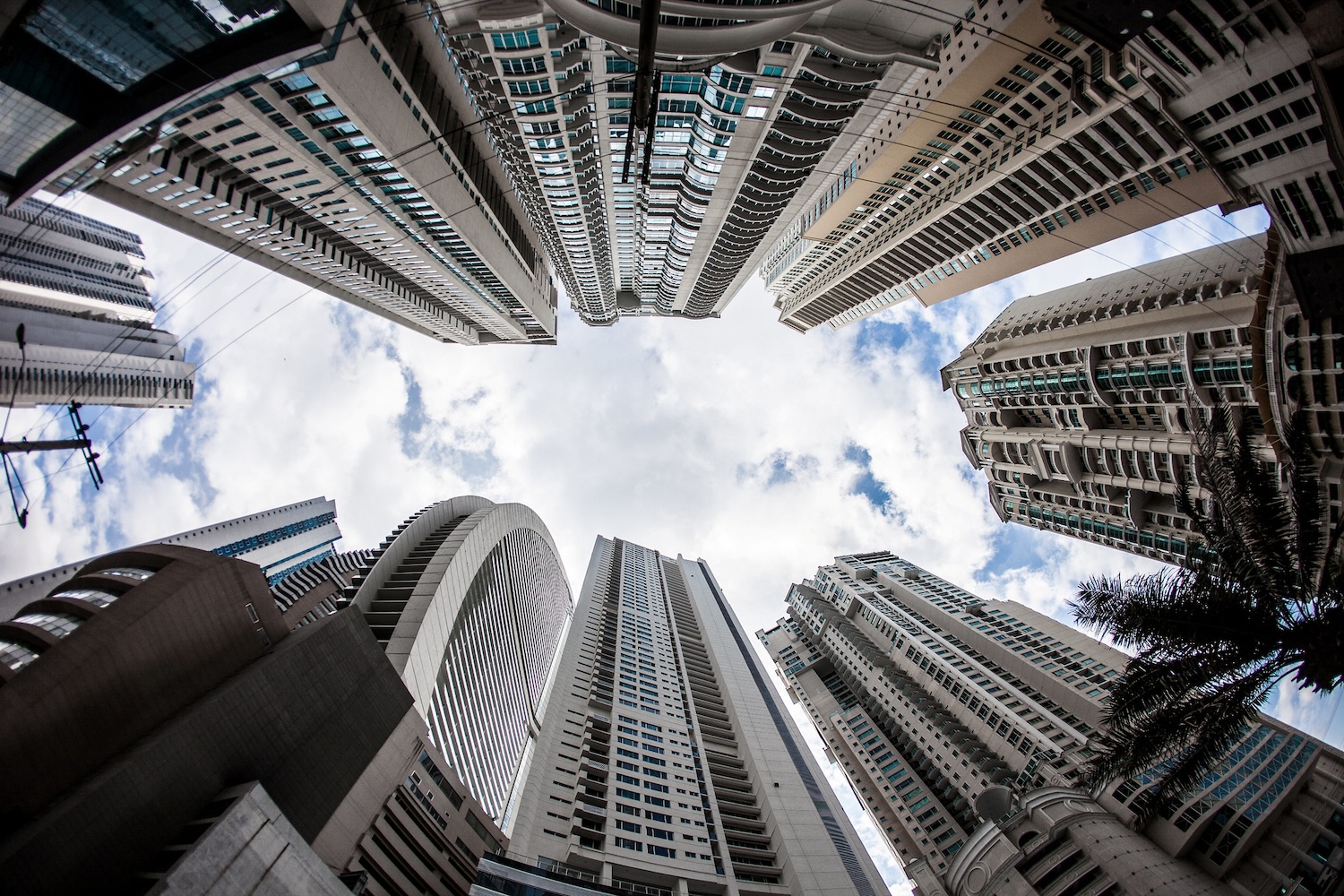Recommended
There can be little doubt that the COVID-19 pandemic is a huge threat to the world’s poor. There is, of course, the direct threat from the new coronavirus, to be taken seriously by everyone. But there are other threats looming too, and some no less worrying.
What should the developing world be doing? There are lessons from the rich world’s experience (including its mistakes). There are also aspects of the realities of life in poor places that need to be considered. Some of the policies found in rich countries are not feasible in poor places or have fewer benefits relative to the costs. New challenges are emerging as the virus spreads into the developing world.
Reliable public data and communications are crucial
The many uncertainties of this pandemic, and the scope for misinformation and mistakes, point to the importance of reliable public communications and data. A key step is for governments to establish an authoritative independent communication channel during the pandemic. A trusted authority should
- provide information on the benefits of social distancing, preventative hygiene and early treatment;
- fact-check information, correcting falsehoods and counteracting stigmas;
- provide help on how to access health care and assistance in cash or kind;
- facilitate feedback on grievances, early warnings, and cases of extreme hardship; and
- link up with other, independent but public, high-frequency monitoring efforts.
Vietnam provides a good example of how a mass information campaign can help. From the outset, the government recognized the threat posed by ill-informed responses. Since early January 2020, information on the virus has been pumped out through popular mass outlets. It seems they largely swamped the fake news. For example, most Vietnamese soon learned that COVID-19 is much more serious than a seasonal flu.
Another example is the Indian state of Kerala, where the state government has issued a steady stream of public announcements appealing to citizen cooperation against the virus and helping people access assistance. Other examples include another Indian state, Karnataka, which implemented a fact-checking website in response to rampant fake news on the virus.
A good base of public knowledge also helps support testing and contact tracing efforts. The government’s communication channel could help people understand that these actions are important collectively.
The dissemination effort should make full use of TV, radio, and the web. We have seen internet-based innovations on information systems for social protection and public health during the crisis. For example, in Vietnam, health information has been shared via a popular government-supported free app, NCOVI. However, internet connectivity is weak in many poor places. Vietnam has 65 percent coverage overall, but that is relatively high; the average rate for African countries is less than half Vietnam’s. Internet coverage in an area does not, of course, mean people have are connected at home. Using the latest available Demographic and Health Surveys (DHSs) for sub-Saharan Africa, one finds that barely 5 percent of the poorest 40 percent of households have the internet at home.
Cellphone usage is more widespread. Using the same DHS data for sub-Saharan Africa, one finds that two-thirds of households have a mobile phone, and 40 percent of the poorest 40 percent. Texting is thus a more promising method for disseminating information, but it can also be a source of misinformation (as Vietnam anticipated). Text messages from the dedicated authority must be clearly recognized as authoritative. Local community leaders should also be responsible for getting the message out on public health from the central unit. The dissemination effort should directly engage local religious leaders.
All this requires that the government is not itself a source of fake news. If trust in government has been damaged, then public communications will be less effective. If handled well, this pandemic could become a good opportunity to restore faith in a government.
Sharper trade-offs and harder constraints emerge in poorer places
Half of the world’s population is now affected by some form of government-imposed restrictions on movement. There is a range of options for governments looking to limit mobility. Following Julian Jamison, we can distinguish between moderate social distancing and its extreme form as a lockdown—comprehensive shelter-in-place. The lockdown policies that have been favored by most rich countries are now being copied in many developing countries. Police and military enforcements of lockdowns are becoming common.
It is a reasonable expectation that social distancing and hygiene will help slow the spread of the virus in poor countries, as in rich countries. It is also well understood that this will come at a cost. The trade-off between current economic welfare during the pandemic and exposure to the virus is well recognized in the rich world. The balance of opinion is that slowing the spread of the virus takes priority at this point.
However, we need to recognize that the trade-off looks rather different from the perspective of poor people. They need to give up more of other aspects of their current well-being for a reduced risk of catching the virus. The benefits are less clear, and the costs are almost certainly higher.
On the benefits
The “flattening-the-curve” argument—to prevent an overload of the health system—makes sense in developing countries with decent health care systems in place, but it rings a little hollow in places where the health system is overloaded in normal times, or barely functional. The shortages in medical supplies, equipment, and staff that we are already seeing in the rich world are familiar to people in the poor world, even without this new virus. It could certainly get worse, but any flattening of the curve may be barely noticeable in practice.
Nor is it clear how much extra protection from the virus is attainable with a lockdown in poor places, as compared to moderate social distancing. Globally, poor people often have a crowded home environment; typical densities in homes in sub-Saharan Africa and South Asia are two-to-three people per room. Also, lockdown is not going to be so easily enforced within slums and villages; it will be the main roads and shopping/commercial areas that are empty of people. As Asif Saleh and Richard Cash point out, urban slums in the developing world have far higher population densities than (say) New York City. But this is not just about crowded urban slums. Yes, overall population density is lower in rural areas, but in many countries rural people are crowded into villages (ironically for their protection), typically living together closely in multigenerational families. There are ample opportunities for the virus to spread quickly in poor areas, both urban and rural.
Lockdown also produces large short-term migration flows, as we have seen in Bangladesh, India, and Kenya. This threatens to spread the virus even faster, and especially into poor and vulnerable rural populations. We are likely to see outbreaks in the rural areas of countries that have imposed urban lockdowns.
Compliance will inevitably be partial. Some will have no choice but to defy the lockdown, some will be able to comply. For most poor people, it will be hard to feed the family from a lockdown, or even obtain water. Most do not have piped water in their home. Going back to the survey data for sub-Saharan Africa, 97 percent of the poorest 40 percent simply do not have piped water in their home or yard. Public taps are just that, public. Regular hand washing is also harder. Prior to the pandemic, the majority of poor people in the world (around 90 percent of the poorest 40 percent in sub-Saharan Africa) did not have soap available where they wash their hands, though there are hopeful signs that this is changing (such as reported by Julie Zollmann and colleagues for Kenya); better hygiene may well emerge as a longer-term benefit. If the family has a regular toilet it will typically be shared with others.
On the costs
The world’s poor rarely have much in the way of a buffer that they can draw on; they tend to have little savings and low food stocks, and a heavy dependence on casual daily labor. Most workers are in the informal sector; for example, this is the case for 90 percent of India’s workforce. And most workers in developing countries cannot work easily from home. Remittances will probably decline in the crisis, given that the shock is global. For some, including the poorest, lockdown entails near-immediate destitution.
The costs of implementing a lockdown also raise concerns. I don’t doubt that the police and military could go a long way toward enforcing a lockdown. But I do worry about how this would impact poor people in poor places. They are probably the ones who will feel the strongest need to leave their homes to acquire food, and they are also more likely to fear and face police brutality. There have already been reports of beatings and even killings by police trying to enforce lockdowns in some parts of Africa and South Asia. In India, there have been reports of police brutality against agricultural laborers, also reinforcing the aforementioned concerns about food supply going forward. There is even a report from Zimbabwe that police enforcing lockdown destroyed three tons of fresh fruit and vegetables. One should be cautious in generalizing from these observations; good behavior by the police and military largely escapes media attention. But concerns remain.
So, this is not solely the cruel but familiar trade-off between economic welfare and health. It is also a trade-off between two aspects of health: illness due to the virus, and hunger, poor nutrition, and restricted access to medical care for non-COVID ailments, due to isolation and the disruption to markets and institutions, including private social protection.
In all this, it has not gone unnoticed that lockdown without adequate consumption support has a morally questionable distributive implication. In the near-term, the poor will almost certainly be hurt more by this policy response to the pandemic than the rich, who will be safely in their homes and better able to look after themselves. Also, consumption support may be seen as redistribution, and so not in the interest of the rich. That may well prove to be a myopic view.
A risk that cannot be ignored
While compliance with a lockdown will be incomplete, it is clearly feasible to implement lockdown on a scale sufficient to cause considerable disruption to the markets and institutions that people depend on for their survival, whether or not they stay at home themselves. Lockdown could even turn the virus response into a famine in some poor places, as I have argued elsewhere.
In his classic book, Poverty and Famines, Amartya Sen pointed to the many ways that famines can occur. These include a decline in the total amount of food available, but they also include changes in how the available food is distributed between people and over time. The performance of markets and other institutions (including government) plays a crucial role, as I discuss in my paper, “Famines and Economics.”
The impact on markets and institutions, and the contractions in command over food at household level, raise the possibility of localized famines during this pandemic. The direct impact of lockdown on the real incomes of poor families comes with pervasive indirect effects—what economists call “general equilibrium effects.” Lockdown could be a powerful disruption to the production and distribution of food. We are learning that today’s food supply chains have numerous vulnerabilities, even in rich countries (as discussed by Shub Debgupta). Lockdown in India has already disrupted agriculture, with labor shortages and delays to harvests. And even if food is available now, its distribution is key, and supply next year could be threatened. Farmers need to plant; shops need to restock (as emphasized by Amartya Sen, Raghuram Rajan, and Abhijit Banerjee). These supply-side threats come alongside a collapse in the earnings of poor people, combined with higher food prices, as we are starting to see in some places. It is certainly feasible to avert the threat of famine with public action, though spells of poor nutrition can still have lasting consequences, including higher vulnerability to other illnesses.
The threat of mass hunger posed by the pandemic, and by the policy responses, has been noted by some observers, including Shenggen Fan and Jayati Gosh. The threat must be taken seriously, especially in poor countries. Protecting the food production and distribution system (nationally and globally) must be a key element of pandemic policy.
Social protection in the pandemic
Consumption support reinforces the health-focused elements of pandemic policies. The support depends heavily on social protection policies. Here there is some good news. The latest available count indicates that 133 countries have implemented some form of social protection response to the pandemic, and the number is growing (Ugo Gentilini and colleagues). Worryingly, the region that is lagging most in this respect is also the poorest, namely sub-Saharan Africa.
What principles should guide thinking about such policies in this context? This is not the time to worry about extra effort at “targeting the poor.” Fine targeting in poor places is over-rated in normal times, as I have argued elsewhere. Now it makes even less sense, mainly because so many workers who we do not normally think of as poor will be in real and immediate need. Normal eligibility requirements for social programs should be reconsidered, especially with respect to migrants locked down, away from their permanent homes. Exclusion errors in targeting should now have higher priority than inclusion errors.
Nor should adverse incentive effects of welfare programs loom large in the near term. Here too, there have been exaggerated concerns in normal times. Policymakers should not worry about adverse incentive effects for now, although transfers to able-bodied workers will almost certainly have to be phased out when the crisis subsides, though recovery will take time. There is a difficult timing problem there.
However, incentivizing better health-seeking behavior now, while also recognizing the externalities involved, is worth thinking about. The widely-used requirement that transfer recipients keep their children in school will clearly need to be relaxed. But other (new) conditions may be worth considering. One might imagine “stay home” conditions, although they would have weak enforceability. Transfers could be made conditional on participation in COVID testing (whatever the outcome). This would not be easy. One possibility is to introduce mobile pooling tests at the local (neighborhood) level. This can greatly reduce the number of tests needed and make testing more feasible for individuals since the group testing is done locally. (On group testing, see the papers by Christian Gollier and Olivier Gossner, and the post by Lawrence Kotlikoff.) Direct support to employers could be made conditional on them not firing workers during the crisis.
A longstanding policy choice is between workfare and transfers. Workfare is the classic policy response to recessions and famines. But workfare sites in poor places tend to be even more crowded than typical homes. The risk of catching the virus is likely to be greater on typical workfare sites, though there may be scope for COVID-sensitive workfare projects. On the other hand, one of the costs of workfare is the foregone earnings from other sources of the participants These will tend to be lower in the pandemic, as economic activity is curtailed. No doubt, many poor workers would turn up, but they may well be individually and collectively better off if they were paid to stay home. The pandemic context is likely to tilt the balance against workfare in favor of transfers.
Countries such as India that have large rural workfare programs can use these to target transfers to poor families. All workfare participants in the last year (say) could be given a transfer payment, without (of course) any work requirement. This is starting to happen in India (notably Uttar Pradesh).
Another longstanding policy choice is between transfers in cash versus in kind, notably direct delivery of food. Ugo Gentilini and colleagues reckon that about one-third of the social protection responses to the pandemic have used cash transfers. Cash does have advantages (including that it can be delivered more cheaply than food), and there have been some (well-evaluated) positive experiences with cash transfers in normal times. However, cash will not be of much use if the food system (markets and their infrastructure) is not functioning. But there is a Catch-22: if the food system is not working, then food delivery is far more difficult. Cash continues to be a good option if the current food delivery system can be maintained adequately, with extra safeguards in the context of a policy of moderate social distancing. (Rachel Strohm discusses this issue further.)
India has the good fortune to be holding large public food stocks at the time the pandemic hit. But it is now under lockdown, and so faces the (self-imposed) dilemma of how to get the food to people. Ayushi Bajaj and colleagues propose using the military (as one of a number of practical suggestions in the context of policy responses in India). Relaxing the lockdown is another option.
There are success stories to point to in food delivery during the crisis (though more evaluations are needed). Patrick Heller describes how community kitchens have distributed meals on a large scale in Kerala during the pandemic. There are obvious steps to take, like
- maintaining school-meal programs but delivering to homes (in kind or vouchers);
- providing a nutritionally-balanced basket of food staples, appropriate to the setting; and
- including soap with the food package.
While protecting the workers by providing health services during the pandemic is undeniably important, the workers in the food production and distribution system are no less essential. In both cases, every effort should be made to minimize the risks to these front-line workers.
There are important roles for civil society groups and the private sector
Civil society groups have played a role in the relatively successful cases, both in communications and food distribution, as in Vietnam and Kerala. The large NGOs can help, though it does not seem that they have been quick to respond in Bangladesh, where NGOs have been so prominent in normal times. Community groups appear to be playing a bigger role.
The private, for-profit, sector will be crucial to both the impact now and the recovery. Keeping the farmers and the food markets in business is crucial during the pandemic, as I have emphasized. Getting people back to work safely is clearly a high priority.
Rapid recovery for the private sector should anticipate that the threat from the virus will subside. Keeping now largely unemployed resources, including labor, in an “idling mode” makes a lot of sense. Instead of firing workers, try to keep them, maybe on reduced wages. Think of that as both insurance and investment.
The financial sector can help. For those that have a bank account, this can facilitate rapid transfers, in partnership with public agencies. The combination of bank accounts, universal unique IDs, and mobile phones can facilitate rapid cash delivery, as discussed by Alan Gelb and Anit Mukherjee. However, while financial inclusion programs have helped expand banking coverage for poor people, there is still a long way to go; in sub-Saharan Africa 90 percent of those in the poorest 40 percent do not have a bank account. Mobile money schemes are promising (including for the unbanked), as discussed by Jenny Aker. Here too, coverage of the poor has been an issue (as noted already, 60 percent of the poorest 40 percent in sub-Saharan Africa do not have a mobile phone). Financial assistance to the front-line efforts of local community groups, including temporary waivers on micro-loan repayments, would help.
There may also be some scope for adapting work to more isolated, home-based, environments. (Think of all that labor-intensive labelling work required by AI algorithms.) Some encouragement/support from government might help to nudge the private sector, as discussed further by Apurva Sanghi and Michael Lokshin.
A rapid, bold, and forward-looking response is needed
At this point, the focus should be on current relief and avoiding even worse future outcomes, with the threat of hunger coming on top of the virus. This is about two things: first, supporting the food supply system, and, second, transfers in cash or kind benefiting poor and vulnerable people. Doing both will maintain the food purchasing power of the world’s poor, consistently with managing their exposure to health risk from the virus.
On the first, the pandemic will be disruptive to the food supply even without lockdowns, but they make it worse, as I have argued. Maintaining food supply will require adequate protection and compensation for workers in that sector.
On the second, countries with a decent social protection system in place will clearly have an advantage. The good news is that most countries do have something in place for social protection, though often at a small scale and with a huge variance in the coverage of existing safety net programs among poor countries; a range in coverage rates from nearly zero to 80 percent. (More on this topic can be found in my paper with Juan Margitic, “Lifting the Floor?”) So, spending more on expanding whatever is in place now makes sense. In some places, new programs will be needed, but they must be kept simple to be implemented quickly through existing institutions.
A rare shock on this scale is not the time for austerity. The rich world can help with financing, including with debt relief, as has already begun. Maybe it is also time for some “helicopter money,” as argued by Jordi Gali (Chapter 6 in the volume, Mitigating the COVID Economic Crisis, edited by Richard Baldwin and Beatrice Weder di Mauro) and Ayushi Bajaj and Gaurav Datt. The central bank can cover the extra fiscal cost of the pandemic response by purchasing government bonds and then writing them off. This is not something to be recommended for normal times, but this is nothing like a normal time.
This note draws on calculations using HS data from a forthcoming paper with Caitlin Brown and Dominique van de Walle. This note has benefited from useful comments and discussions with Cait Brown, Gaurav Datt, Ugo Gentilini, Naomi Hossain, Nishtha Kochhar, Michael Lokshin, Berk Ozler, Carolina Sanchez-Paramo, Dominique van de Walle, and participants at the author’s presentation of this topic at a World Bank webinar, April 20, 2020
Rights & Permissions
You may use and disseminate CGD’s publications under these conditions.






